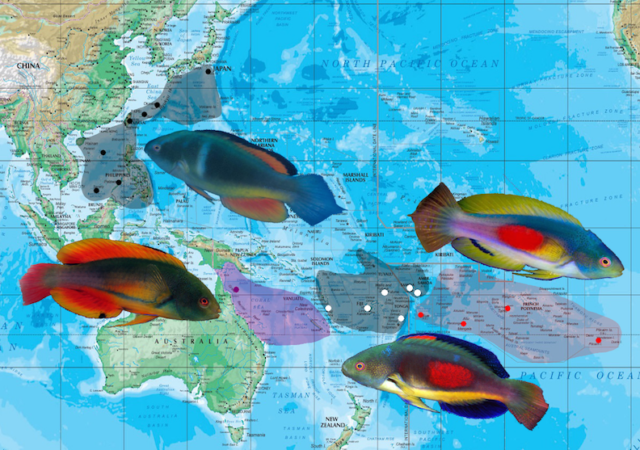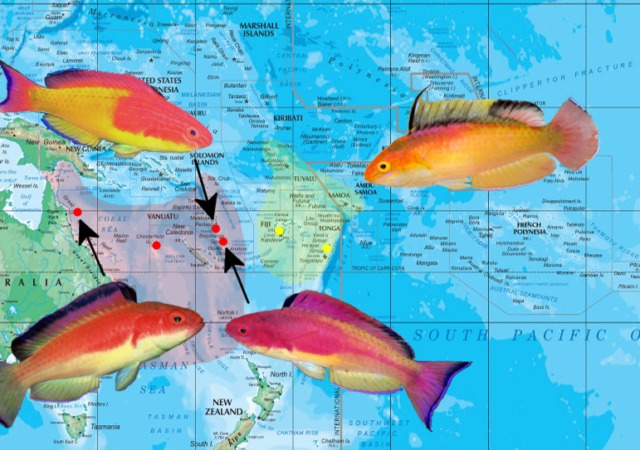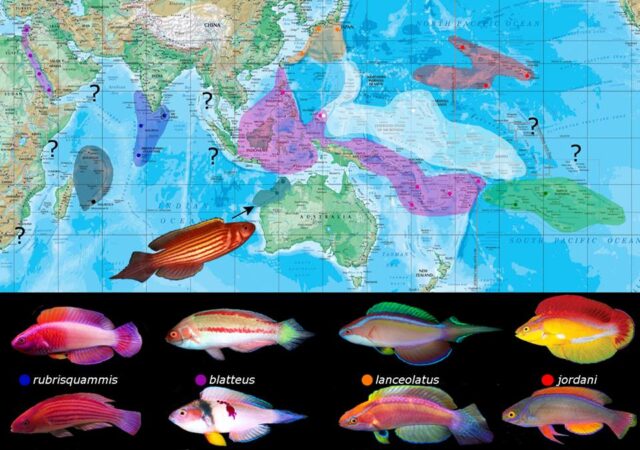Cirrhilabrus exquisitus is an unusually widespread and variable species which appears to form a lineage alongside the scottorum and cyanopleura groups, with all three sharing characteristically mid-length pelvic fins. Unlike any other species of Cirrhilabrus, the Exquisite Fairy Wrasse has…
2.1 Fairy Wrasses: The scottorum group
Moving away from the first major Cirrhilabrus clade, we explore the various species groups that differ by having larger and longer pelvic fins. The scottorum group is a small conglomeration of two confirmed species, one of which is highly polychromatic…
1.4 Fairy Wrasses: The bathyphilus group
The bathyphilus group, despite being a very small congregation, is by no means any less interesting or provocative compared to its congeners. In 1997 during the Indo-Pacific Fish Conference held in New Caledonia, five unidentified specimens of Cirrhilabrus were brought…
1.3 Fairy Wrasses: The lanceolatus group
The members of the lanceolatus group are some of the largest and showiest fairy wrasses, collectively celebrated for their grandiose caudal fin and chromatic brilliance. The group spans most of the Indo-Pacific, with its various species occupying a series of…
1.1 Fairy Wrasses: The lubbocki group
The lubbocki group houses six members divided evenly into two separate but closely related clades. They are the lubbocki clade and the marjorie clade. All members of this group are small to medium sized species with a recurring red and white…







